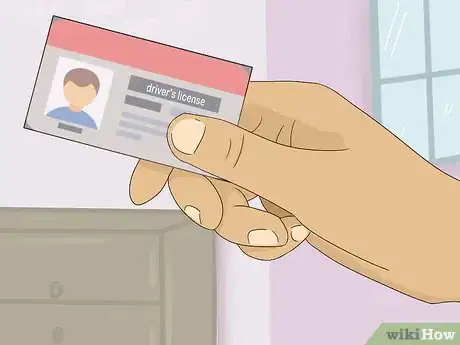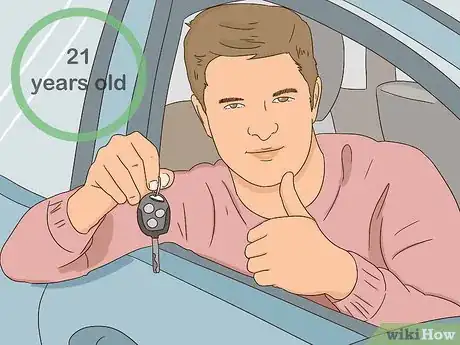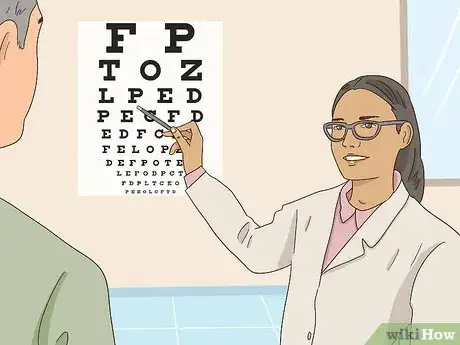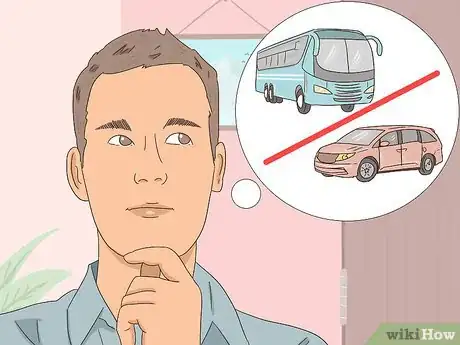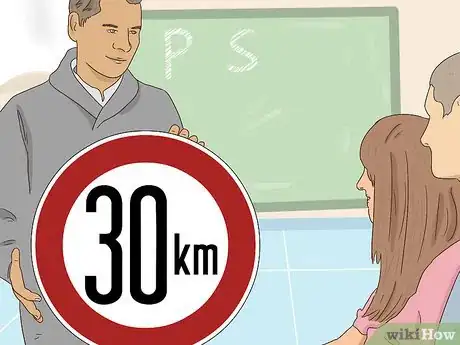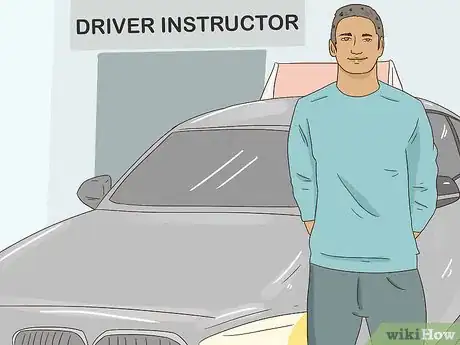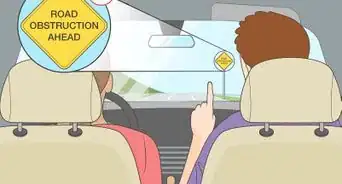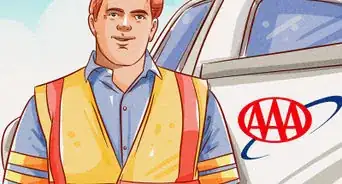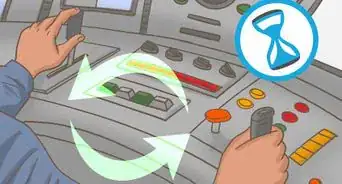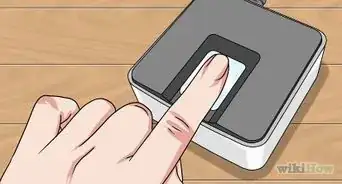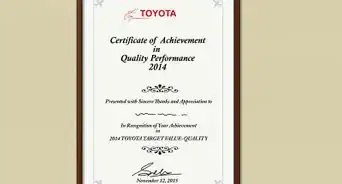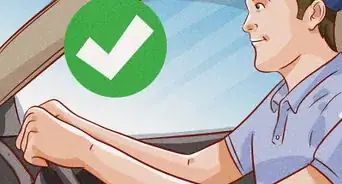This article was co-authored by Bruce Storrs and by wikiHow staff writer, Amber Crain. Bruce Storrs is a Driving Instructor and the President & CEO of North County School of Driving in San Marcos, California. With more than 31 years of experience, he specializes in teaching teens and adults safe driving behaviors in the classroom, online, and behind the wheel. Bruce earned a BA and MA from San Diego State University.
This article has been viewed 91,108 times.
Working as a driving instructor can be incredibly rewarding. If you’ve got a good driving record and are passionate about teaching others the rules of the road, then this could be the job for you! There are a few basic requirements you must meet, like having a valid driver's license license and high school level education, before you can register for a certification program. Once you've passed the training courses and obtained your license, you can start applying for instructor positions near you.
Steps
Meeting the Basic Requirements
-
1Have a valid driver's license. Before you can train to be a driving instructor, you need to have a valid driver's license in the same class of vehicle you’re looking to be an instructor for. This license must be valid in the state or country where you want to teach.
- If your license has been recently suspended or revoked, you are not eligible. When you become eligible again depends on your territory.
- You may also be ineligible if you've received a large number of traffic fines in the past. Contact your local Department of Motor Vehicles office for more details.[1]
-
2Be at least 21 years old to teach "behind-the-wheel." Most states and countries have a minimum age requirement of 21 for hands-on, in-vehicle instruction. If you're interested in teaching in the classroom only, you should be at least 19 years old. However, these rules vary depending on your location, so check with your local DMV office to confirm details.[2]Advertisement
-
3Have several years of relevant driving experience. In most states, you'll need at least 2 to 3 years of experience with a valid license before you can become an instructor. This experience should match up with the type of driving you want to teach. For instance, if you want to instruct commercial drivers, you should have several years of experience driving commercial vehicles.[3]
-
4Graduate from high school or complete a GED program. If you’ve already finished your high school education, you will need to show proof to your state or country’s government officials to get certified. If you haven’t, complete a GED or equivalent training program (depending on where you want to teach) before applying for the certification program.
- Some employers, such as public schools, may require additional education. If you have a future employer already in mind, check with them for additional requirements.
-
5Be able to pass a vision test and basic health screening. You must pass a vision test to become an instructor, so get fitted for glasses or contacts with an up-to-date prescription, if necessary. A basic physical will also have to be passed. Depending on your location, you may be required to pass a mental health screening, as well.[4]
Becoming a Certified Instructor
-
1Decide if you want to teach commercial or non-commercial drivers. The type of certification and training you get depends on whether you want to teach commercial or non-commercial driving. Non-commercial vehicles include standard cars, mini-vans, sports utility vehicles (SUVs), light trucks, motorcycles and mopeds. Commercial vehicles include passenger buses, diesel trucks and ambulances.[5]
-
2Enroll in an approved training program for your specialization. Approved programs are offered by colleges, vocational schools and government agencies, either online or on-campus. You'll learn the transportation laws and protocols for your area, and receive training for how to teach them to others. Basic training for how to create lesson plans and lead classes will also be provided.[6]
- Depending on your location and desired specialization, training may last anywhere from 2 days to several weeks.
- Once complete, you'll be given a certification to submit when applying for your driving instruction license.
-
3Pass the written driver instructor exam. Your local DMV or related organization will administer this test. It will cover traffic laws, safe driving practices, operation of motor vehicles, your knowledge of teaching methods and techniques, as well as some basic first aid.
- When you apply for your license, you'll be asked to submit proof that you've passed this exam.
- In some territories, you’ll need to pass a practical driving test as well.
-
4Complete any necessary observed driving hours. Depending on your state or country, you may need to be observed by a qualified driving instructor. In some places, this observation takes place while you drive, to make sure you have the proper driving technique. In others, the observation is focused on your teaching methods, and you’ll be supervised while you teach a new driver.
-
5Apply for your driving instruction license. After passing your tests, apply for your license with your state or local motor vehicle agency. Vision and physical tests will be required at this time. The agency will also do a criminal background check and driving record check. You'll need to submit fees, as well, but these will vary depending on your location.[7]
- Once your application is approved, the state or agency will issue your license.
- In states and countries where instructors can work outside of a driving school, government officials may inspect the vehicle you’ll use for teaching.
Finding an Instructor Position
-
1Apply for positions relevant to your specialization. Driver-training schools, government agencies, public schools and vehicle insurance companies are just a few of the employers you can start looking into to start your career. Each employer may have their own set of requirements, so be sure to research those closely before applying for the position.[8]
- Depending on your specialization, your students could be high school kids, bus drivers, ambulance drivers, and so on.
-
2Become an independent contractor. You don't necessarily have to work for an agency or specific employer in this field. Independent contracting is also an option! Independent contracting essentially means you'll be self-employed and act as your own boss.You'll be responsible for promoting your services and obtaining clients through marketing strategies, just like any other business owner.[9]
- Check with your local DMV and training officials for more information about how to get started.[10]
-
3Create a professional website for your business. A solid website is extremely important for independent contractors, since most customers will find you through a Google search. Prepare a polished website with plenty of information, pricing, contact information, and a list of services offered.[11]
- Use search engine optimization (SEO) to make your site easily searchable. Create keywords like "driving instructor + [your location]," "defensive driving," driving instruction," and so on.
- Make sure your homepage tells visitors right away that you are a licensed professional.
-
4Use social media platforms to advertise your business. These days, social media is crucial when it comes to marketing your business and generating customers. Create a Facebook page for your business and post frequently. Focus on your skills and services in your posts. Sign up for Facebook ads to reach even more potential customers.[12]
- Occasionally hold contests and special promotions to get more attention.
- Tailor your posts to your potential customers. For example, if you usually teach teenagers, post content that appeals to young people.
-
5Develop partnerships with local organizations to find customers. Local high schools, driving schools, hospitals, court systems and law offices are excellent organizations to network with and eventually partner with. High schools and driving schools need driving instructors for their students, hospitals need driver evaluation services for EMTs, and court and law-related organizations can point you to clients who need defensive driving courses.[13]
-
6Consider taking college courses in business and marketing. When you’re an independent instructor, you'll have to find your own clients, network in your community, and have a basic understanding of how to run your own business. Look into continuing education courses on business, marketing, and teaching if you want to gain or sharpen those skills.
- Additional education will cost money and time, so you may want to wait until your business has been established for a few years first.
Community Q&A
-
QuestionI am teaching my child to drive. What qualifications do I need?
 Community AnswerYou need a valid driver's license and five years' driving experience. Your child must have a learner's permit.
Community AnswerYou need a valid driver's license and five years' driving experience. Your child must have a learner's permit. -
QuestionHow can I find a driving instructor in Illinois that will teach an older person?
 Community AnswerAge should not be an issue in any state. Use the internet or other resources to find a local driving school and register with them directly.
Community AnswerAge should not be an issue in any state. Use the internet or other resources to find a local driving school and register with them directly. -
QuestionHow much do driving instructors earn?
 Community AnswerIt varies depending on your location. In the Unites States, the average salary is around $41K annually.
Community AnswerIt varies depending on your location. In the Unites States, the average salary is around $41K annually.
References
- ↑ https://dmv.ny.gov/driver-training/become-driving-school-instructor
- ↑ http://learn.org/articles/Driving_Instructor_How_to_Become_a_Driving_Instructor_in_5_Steps.html
- ↑ https://dmv.ny.gov/driver-training/become-driving-school-instructor
- ↑ https://www.appointment-plus.com/blog/7-requirements-in-becoming-a-licensed-certified-driving-instructor
- ↑ http://learn.org/articles/Driving_Instructor_How_to_Become_a_Driving_Instructor_in_5_Steps.html
- ↑ http://learn.org/articles/Driving_Instructor_How_to_Become_a_Driving_Instructor_in_5_Steps.html
- ↑ http://learn.org/articles/Driving_Instructor_How_to_Become_a_Driving_Instructor_in_5_Steps.html
- ↑ http://learn.org/articles/Driving_Instructor_How_to_Become_a_Driving_Instructor_in_5_Steps.html
- ↑ http://www.drivingschool.marketing/7-ways-driving-instructors-can-advertise-business/
- ↑ http://learn.org/articles/Driving_Instructor_How_to_Become_a_Driving_Instructor_in_5_Steps.html
- ↑ http://www.drivingschool.marketing/7-ways-driving-instructors-can-advertise-business/
- ↑ http://www.drivingschool.marketing/7-ways-driving-instructors-can-advertise-business/
- ↑ http://www.drivingschool.marketing/7-ways-driving-instructors-can-advertise-business/
